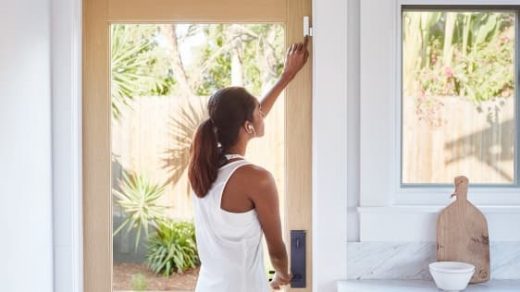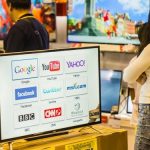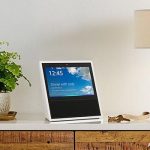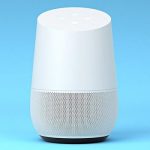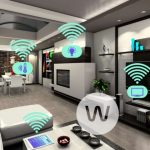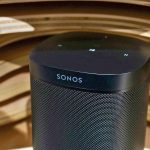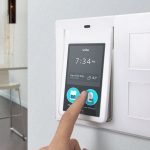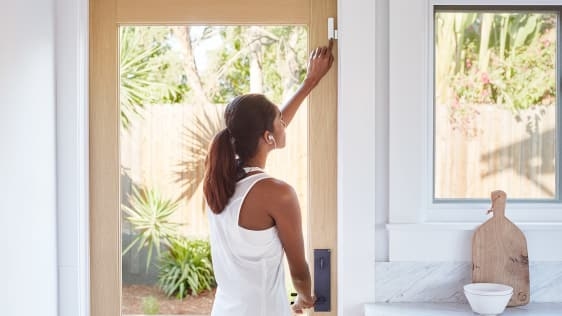How Smart Home Lock-In Imprisons You, And Why That Might Change
One of my biggest anxieties about putting together a smart home is the possibility of walking into a trap.
That’s a real possibility when so many products are cut off from one another. Want to let Amazon unlock your door and stick packages inside your house? That requires an Amazon Cloud Cam and a specific smart lock from either Kwikset or Yale. Feel like building your own home security system powered by Google’s Nest? That requires a different Yale-branded lock, and won’t work with smart doorbells from Ring (which is now owned by Amazon). And if you’ve invested in Apple’s HomeKit system, you won’t be able to arm Nest’s security system or view your Amazon Cloud Cam feed by asking Siri.
The business motivations are clear: Tech giants like Amazon, Google, and Apple see the smart home as new territory to conquer through their respective ecosystems. While they’ve all maintained some level of openness toward outside partners, they also use their own hardware to build exclusive features. As a result, the more you buy into one system, the more you become locked out of others.
It doesn’t have to be this way. Just as the internet is designed not to block websites based on your choice of browser, the Internet of Things shouldn’t cut you off from certain services because you bought the wrong security camera or smart speaker. Smart home devices should be interoperable, and tech giants should commit–more than they have so far–to pushing standards forward. Doing so might be a big undertaking, and would go against years of tradition, but in the long run, it’ll be worthwhile for everyone.
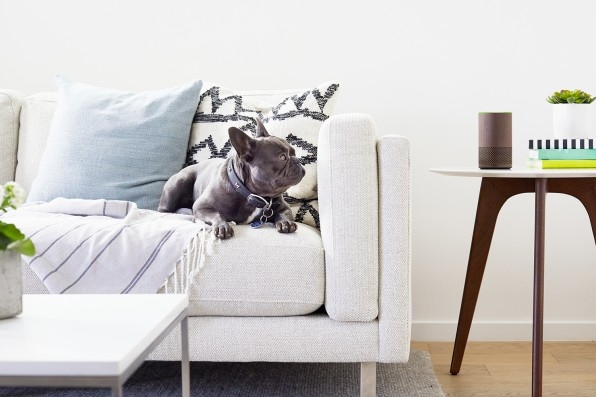
You Can Talk To Me (But I Won’t Talk To You)
The tech giants’ current approach to smart homes is a lot like the one they took with mobile devices a decade ago. Instead of championing interoperability, companies created their own platforms, each with their own set of tools that allowed developers to build apps. Instead of the open web, we got a bunch of separate app stores.
What resulted was a far cry from the unfettered openness of the web. “Historically, they talk about open APIs, and that’s a different thing,” says Tobin Richardson, CEO of the ZigBee Alliance, which is pushing for more interoperability in smart homes. “An open API just means, ‘I’ll let you write to my system. That’s not really an open ecosystem. That’s just saying, ‘You can talk to me.’”
On smartphones and tablets, the closed-off approach wasn’t such a bad thing, at least for Apple and Google, whose platforms became predominant. Native apps tended to be snappier and more powerful than web-based ones, and because the market coalesced around two major platforms, deciding between them wasn’t too burdensome for consumers or developers.
But smart homes are more complicated, with a half-dozen viable platforms that interconnect in some ways and compete in others. You can control a Nest thermostat from an Amazon Echo, or view a Nest Cam feed on Amazon’s Fire TV, for instance, but you can’t ask Alexa to arm a Nest Secure system or announce who’s at the door when the Nest Hello doorbell rings. Consumers must therefore anticipate whether the product they’re about to buy will work with any number of other products they might want in the future. That’s a lot tougher than deciding between an iPhone or an Android phone.
Consumers can avoid headaches to some extent by purchasing platform-agnostic products, such as an Ecobee thermostat that works with all the major voice assistants, or an August smart lock that plays nicely with HomeKit, Nest, Alexa, and more. Consumers can also lean on switchboard services like IFTTT and Stringify to connect products that aren’t explicitly designed to work together.
But at some point, keeping track of all those integrations becomes a headache. And for developers, it’s even harder. Instead of just writing apps for a couple of platforms, now they have to work with a tangle of ecosystems and a fragmented customer base.
“From a developer perspective, it’s kind of a nightmare, because now I don’t have to develop just for one set of APIs, or interfaces, or security protocols. Now I’ve got to do it three, four, or five times for all these different vendors that I know my consumer base is going to use,” says Gary Martz, a spokesman for the Open Connectivity Foundation (OCF), a group that’s creating an interoperability standard for smart homes.
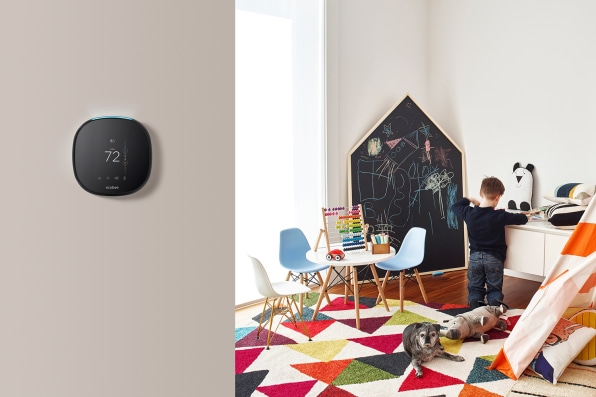
Fighting For Openness
Some third-party organizations are trying to solve these problems with open standards. The idea is that a company like Amazon wouldn’t have to explicitly support products from rivals like Google or Apple. Instead, each company would support the standard, which ensures that they all work together.
“Major vendor A isn’t going to go integrate with major vendor B and major vendor C directly in their devices in a lot of cases,” OCF’s Gary Martz says. “But if there’s a neutral third party that they all can agree has done things the right way, they’re going to be willing to integrate those solutions more readily.”
Still, these efforts at standardization are fairly young. The OCF (whose backers include Intel, Samsung, Microsoft, LG, and Qualcomm) has certified just a dozen smart home products, including LG and Samsung refrigerators, a washer from Haier, and some universal remotes from Sure. Martz says more are in the pipeline, now that the group has ironed out its certification process.
“You’re going to see more OCF-certified products in 2018, primarily in the smart home, and they come from a wide group of vendors,” he says.
If everyone adopted OCF, it would certainly simplify matters. But it’s not the only group working on interoperability. The ZigBee Alliance has its own standard called Dotdot, and plans to start certifying devices in the third quarter of 2018. The program will open up first to products that use an emerging wireless protocol called Thread, followed by others that use more established protocols like Wi-Fi and Bluetooth.
ZigBee’s Tobin Richardson says the groups have recently started talking about “harmonizing” their efforts in areas like security. There’s also been some discussion about whether it’d be useful for the groups to merge, though Tobin says that’ll largely depend on whether their technology aligns.
“Our goal is to help members get products in the market, and help consumers enjoy being able to choose from a wide variety of devices and get a good experience out of it,” Richardson says. “So if there’s an alignment at the organization level to make that happen, we’re certainly happy to help support that.”
To complicate things further, a third group called Network of Intelligent Camera Ecosystem (NICE) Alliance emerged earlier this month, promising a specification for smart cameras in particular. NICE’s goal is to democratize features like face recognition, online backups, and security, offering them to budget camera makers that don’t have the resources to compete with major firms like Amazon and Google.
On some level, NICE is yet another competing standard, but it’s also somewhat harmonious. Cameras aren’t the focus of other groups like OCF and ZigBee, yet they are increasingly the mechanism through which tech giants are creating lock-in. David Lee, the CEO of Scenera, the Silicon Valley startup spearheading the alliance, says NICE will reference the work of groups like OCF and ZigBee, while addressing areas that their standards don’t: “We’d like to work with all these existing APIs and open standards as much as possible.”

Better But Slower
Even if they live up to their potential, open standards aren’t a magic solution. One of the inherent problems with standards is that they tend to lag behind what individual companies are trying to accomplish. A group like OCF, for example, might not anticipate a door-unlocking service like Amazon Key while building its specification, thereby precluding other companies from supporting the concept.
But without the backing of major tech companies, figuring out what device makers need gets even harder. Amazon, Apple, and Google could be working with groups like OCF and ZigBee to improve their standards, but at the moment, none of them have committed to doing so–at least not publicly.
ZigBee’s Tobin Richardson remains optimistic that those companies will get on board. Having talked to major tech companies at industry conferences and observed their public statements, he believes their rhetoric is starting to shift toward open ecosystems.
“They understand that this is a different paradigm,” Richardson says. “It’s not about a phone, and locking people into the next phone. This is a wide variety of different devices, and when done right, it’s bigger than the scope of one company.”
Still, he recognizes that in a lot of cases, corporate culture will have to change before companies fully embrace interoperability. And that’s going to take a while.
“I’m more bullish now than I was at the beginning of the year, and the beginning of last year,” Richardson says, “but I don’t want to understate the amount of work and level of effort that’s needed to get there.”
(52)

